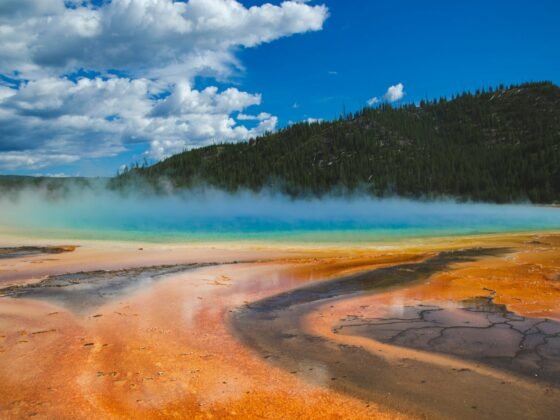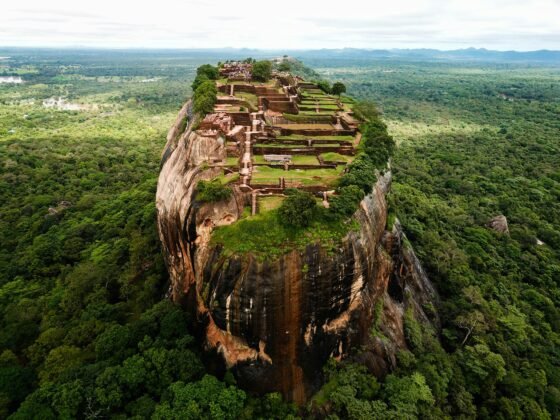The Spanish coastline is divided into 10 incredibly diverse ‘Costas’ or coasts, and there’s a perfect costa waiting for you! Here we explore each coast running from north to south:
Costa Verde – One of the least known costas is the rugged Costa Verde, aka ‘the green coast’, and lies on the northern coast of Spain. Facing onto the Atlantic Ocean, this coast includes Galicia (which also has its own costa name: Costa do Marisco, aka shellfish coast), Asturias, Cantabria and the northern Basque region. Basically the coastline runs all the way from Portugal on the west coast, all the way up to the French border. The region has an oceanic climate which makes it the perfect hiking and walking destination amongst the lush forests and vegetation. The golden sands, winding clifftop trails and traditional fishing villages are ideal all year round. The northern portion of coast is set around the Bay of Biscay which makes it popular with windsurfers and kitesurfers. The YouTube video below contains a small taster of Costa Verde…
Costa Brava – Running from the border with France, the east coast Costa Brava, aka The Wild or Rugged Coast lies along the Mediterranean Sea and is well known with travellers thanks to the ubiquitous 1960s package holidays. Brava runs from Portbou on the French border, through to Blanes in the south, taking in the Girona province, Barcelona, Lloret de Mar and Gerona. The coast is typified by rugged cliffs, hidden coves, quaint villages and small beaches. Indeed, despite the mass tourism, the authentic fishing village atmosphere has not been lost. The coastline section that runs from Barcelona to Girona province is also known as the Costa del Maresme.
Costa Dorada – Aka The Golden Coast, is blessed with 225 km (140 miles) of pristine golden sandy beaches. Also spelt Costa Dourada, this coast runs from just south of Barcelona in the Catalunya region, right down to the Ebro River. The golden coast encompasses lively Sitges with its low rise buildings and wealth of 19th century former merchant’s mansions. Salou has long welcomes families with its long safe beaches and the popular waterpark Port Aventura.
Costa del Azahar – More romantically known as the Orange Blossom Coast, thanks to the vast fruit orchards that perfume the air. Running from the Ebro River in the north, down to Valencia, this costa is popular with families looking for a laidback Spanish getaway. Highlights include cultural Valencia, the third largest city in Spain and the Roman town of Sagunto with its myriad of ruins. Valencia is also the home of the authentic paella – don’t miss the opportunity to try it!
Costa Blanca – And now onto possibly the most famous Spanish costa, the White Coast, aka the Costa Blanca. Set around Alicante province, this popular costa is brimming with established resorts, lively towns and pristine beaches. This is home to the most famous holiday resort in the world, Benidorm, which is incredibly clean, fun and lively. Also popular is the buzzing resort of Torrevieja. As well as an abundance of quality golf courses, there are also pockets of authentic Spain in the north: the small towns of Calpe, Javea and Denia ooze charm and traditional culture.
Costa Calida – The up and coming Costa Calida, aka Warm Coast, boasts a spectacular climate which is great during the shoulder seasons. Set around the Murcia region, this costa boasts a 250 km stretch of stunning Mediterranean coastline. If you’re looking for a laidback destination, with small resorts and quiet beaches, then this is for you. Highlights include the saltwater Mar Menor lagoon, historic Cartagena and the famous La Manga Club.
Costa de Almeria – Next along the Mediterranean coast is the Costa de Almeria, which is set around the historic city of Almeria in the south east of Spain. Much of the area remains undeveloped and the areas that have welcomed tourism remain low-key and relaxed. The two modern of Roquetas de Mar and Almerimar have great facilities and amenities. The 217 km (135 mile) coast is popular with windsurfers and also has a small stretch dedicated as a naturist beach!
Costa Tropical – Running along the south of Spain is Costa Tropical, which is set around Granada and is also known as Costa de Granada. It’s probably the most diverse costa where it’s said that in the morning you can hike the snow-capped mountains, and then swim in the Med in the afternoon! With just 30km of coastline, Costa Tropical is a real get away from it all destination, with small beaches, hidden coves and small guesthouses and villas. Head inland to walk the well-known Alpujarras, go skiing during the winter in the Sierra Nevada Mountains and browse the Moorish heritage of Granada, which is home to the iconic Alhambra.
Costa del Sol – The Sunny Coast is probably the most famous thanks to a fifty year love affair with the region. Running from Nerja to Estepona, this costa includes the resort-style locations of Torremolinos, Marbella, Benalmadena, Fuengirola and Puerto Banus. The region has dramatic landscapes, surrounded by mountains, oak and pine forests, which make it popular with walkers and climbers. It’s also the most popular spot for golf, with over 40 courses located around Malaga. And as you’d expect, the resort towns have fantastic amenities with a wide array of watersports and activities on offer including horse riding, wine tasting, Spanish cookery classes and even the odd nudist beach (or two).
Costa de la Luz – And finally round to the Coast of the Light, aka Costa de la Luz. Set along the south coast on the Atlantic side within Andalucia. The most popular spots are Huelva and Cadiz and the area overlooks the Strait of Gibraltar. Travellers can expect delicious long sandy beaches and the area is popular with artists and watersports enthusiasts. Windsurfers should check out Terifa in the very south of Andalucia which has superb conditions and lies just 13 Km from north Africa, in fact on a clear day you can see the Rif Mountains in Morocco. Wander the heritage town of Chiclana de la Frontera, soak up the history in the city of Cadiz and hike the cork oak forests of the Parque Nacional de Donana which is the largest in Spain.












